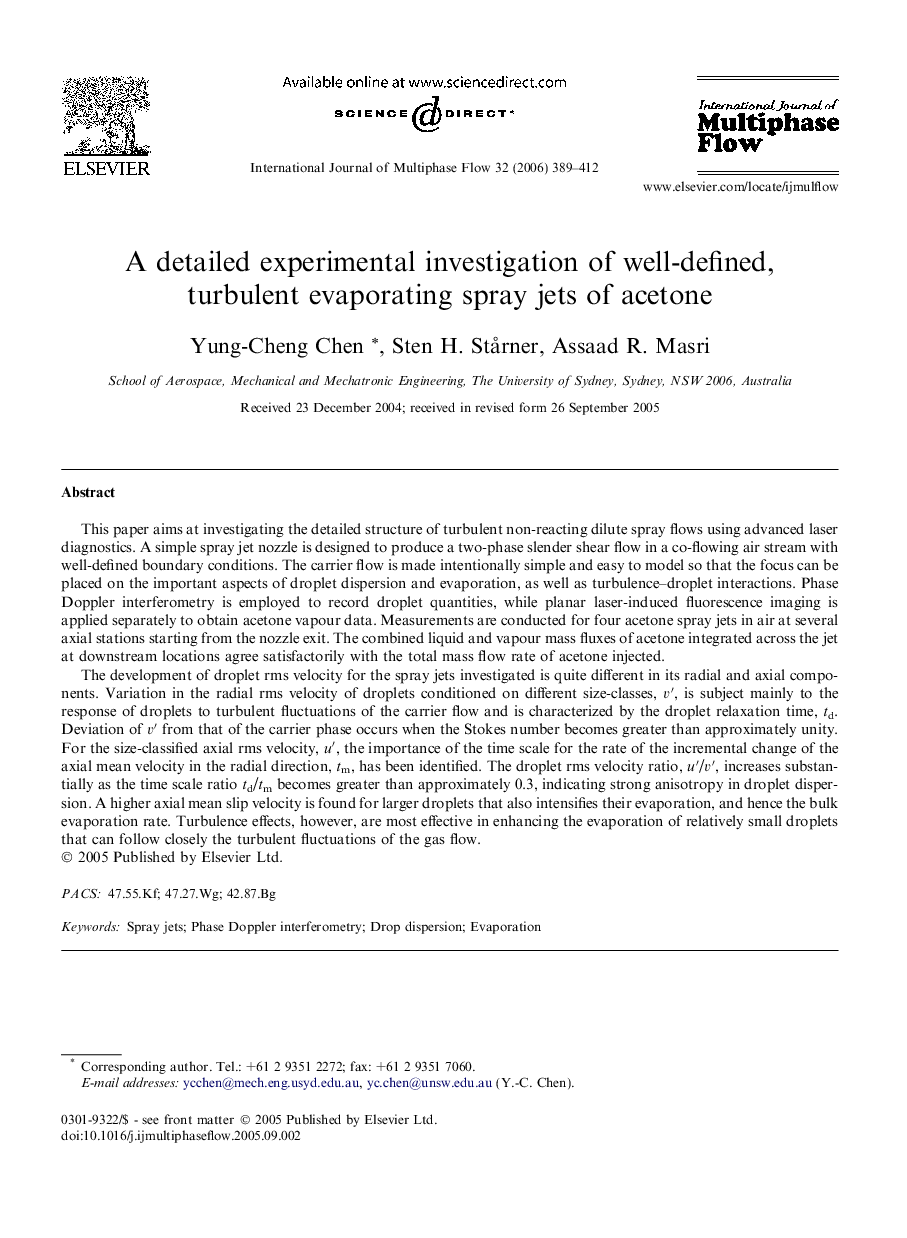| Article ID | Journal | Published Year | Pages | File Type |
|---|---|---|---|---|
| 667125 | International Journal of Multiphase Flow | 2006 | 24 Pages |
This paper aims at investigating the detailed structure of turbulent non-reacting dilute spray flows using advanced laser diagnostics. A simple spray jet nozzle is designed to produce a two-phase slender shear flow in a co-flowing air stream with well-defined boundary conditions. The carrier flow is made intentionally simple and easy to model so that the focus can be placed on the important aspects of droplet dispersion and evaporation, as well as turbulence–droplet interactions. Phase Doppler interferometry is employed to record droplet quantities, while planar laser-induced fluorescence imaging is applied separately to obtain acetone vapour data. Measurements are conducted for four acetone spray jets in air at several axial stations starting from the nozzle exit. The combined liquid and vapour mass fluxes of acetone integrated across the jet at downstream locations agree satisfactorily with the total mass flow rate of acetone injected.The development of droplet rms velocity for the spray jets investigated is quite different in its radial and axial components. Variation in the radial rms velocity of droplets conditioned on different size-classes, v′, is subject mainly to the response of droplets to turbulent fluctuations of the carrier flow and is characterized by the droplet relaxation time, td. Deviation of v′ from that of the carrier phase occurs when the Stokes number becomes greater than approximately unity. For the size-classified axial rms velocity, u′, the importance of the time scale for the rate of the incremental change of the axial mean velocity in the radial direction, tm, has been identified. The droplet rms velocity ratio, u′/v′, increases substantially as the time scale ratio td/tm becomes greater than approximately 0.3, indicating strong anisotropy in droplet dispersion. A higher axial mean slip velocity is found for larger droplets that also intensifies their evaporation, and hence the bulk evaporation rate. Turbulence effects, however, are most effective in enhancing the evaporation of relatively small droplets that can follow closely the turbulent fluctuations of the gas flow.
